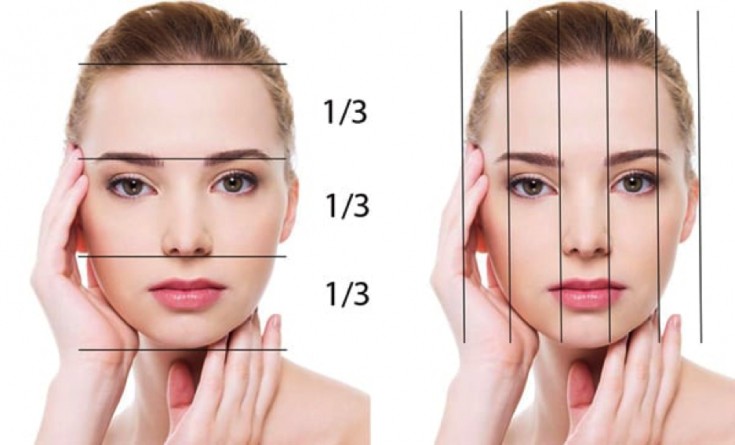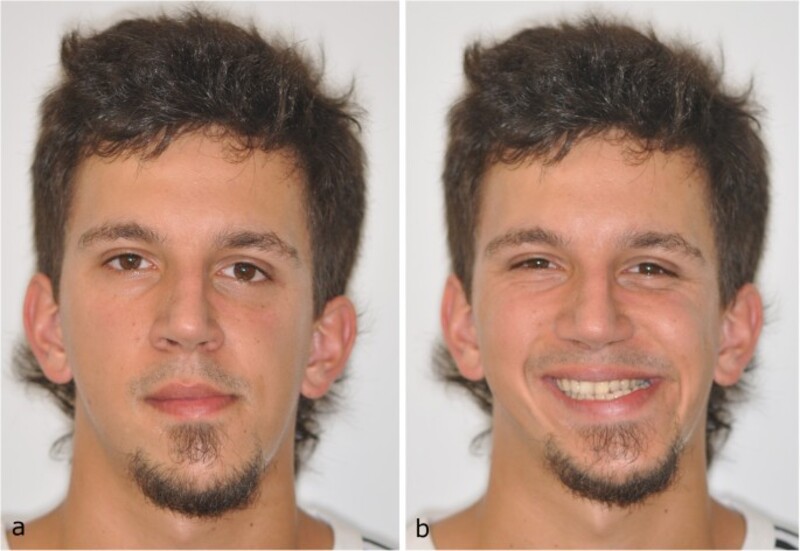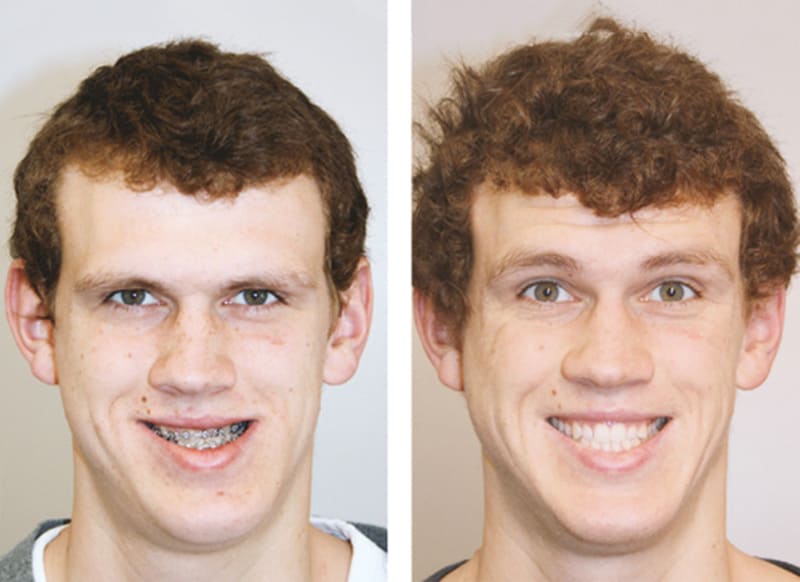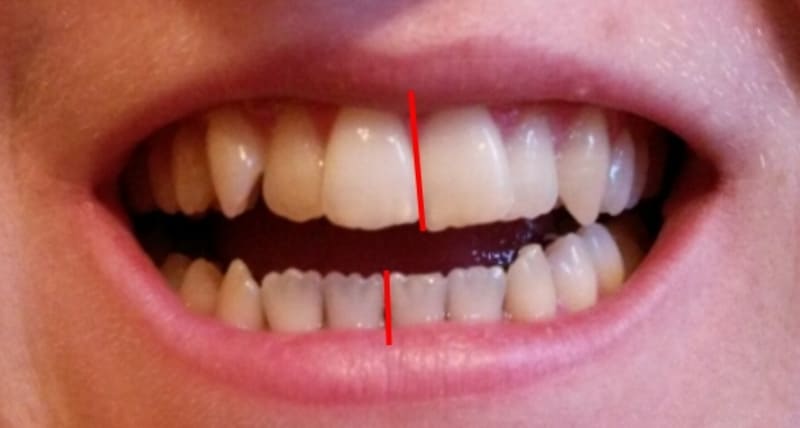Facial Asymmetry Due to Occlusion – How to Fix?

Contents:
The features defined by genetics and heredity determine the individual appearance of each person. Also, appearance is affected by changes acquired in the course of life, which may occur due to developmental disorders of the facial bones of the skull, improper breathing, and swallowing. Most often due to an incorrectly formed bite: crooked teeth, unadjusted upper and lower jaws, the mismatched size of the teeth and the jaw, the dislocation of the lower jaw to the side or back, or the extension of the lower jaw firmly forward. All these signs violate proportions and symmetry.
Facial Asymmetry Due to Jaw Misalignment
As a rule, the violation of facial proportion occurs due to the incorrect position of the jaws. Often the asymmetry of the mandible can lead to the development of a small or large chin, drooping corners of the mouth, sunken cheeks, and a mouth that does not close. The cross bite dramatically affects the appearance, causes significant facial disproportion, uneven tooth abrasion, which in turn affects the chewing process, increasing the risk of periodontal disease, excessive tension of the temporomandibular joint leads to the development of bruxism, spine curvature disorders, clicks when opening and closing the mouth, headaches, migraines. As well as psychological aspects: low self-esteem, rejection of appearance, and social problems.
Severe facial asymmetry due to overbite can cause speech problems such as lisping and difficulty biting, chewing, and even breathing. In particular, malocclusion is known to narrow the airways and thus affect the quality of sleep. In addition, it can cause snoring and dry mouth and even throw you off balance.
Determining the malocclusion is quite simple visually. But it is not so clear for many people with not so obvious bite pathology. The best way to understand if you have oral health problems is to see the dentist. Especially if there are difficulties with speech, chewing or breathing. Even if your malocclusion is subtle, a professional dentist can identify it.

A modern dentist has the necessary tools to detect malocclusion. The specialist can also put the consequences into perspective. For many people, malocclusion is so minor that it does not affect their health. However, digital images can help assess the problem and plan treatment if you need treatment.
How Can Braces Correct Facial Asymmetry?
Mandibular asymmetry is common in many countries. Quite rarely a person has a perfectly symmetrical face. Most people usually don’t even notice it. However, in cases where the upper or lower jaw grows at different rates or there is a problem with the position of the jaw, often seen in malocclusion or crossbite, facial asymmetry may be more pronounced.
The good news is that Invisalign treatment and braces can correct an asymmetrical face by aligning the jaw and balancing facial features. Clear aligners are ideal for correcting malocclusion. This treatment offers many advantages over conventional metal braces.

First, there are no braces and wires. The aligners are thin and almost invisible from the outside. You can also take them off to enjoy your favourite meals or brush your teeth before bed. This is a game-changer as it eliminates many of the hassles associated with wearing braces. Convenience is another benefit. You barely notice them; they never touch your inner lip or cheek.
How does the face change after orthodontic treatment?
Sometimes we hear a question: “Do braces change the nose form? Do orthodontic systems lengthen my face?” No, orthodontic treatment, including braces, does not directly affect the nose or elongate the face.
People sometimes think that their nose looks different after braces, or that their face appears stretched because of the angles. However, when we move the teeth and jaws into place, the angles between the lips and nose, and sometimes between the lips and chin, change, causing the nose or other facial features to be slightly different.
How exactly do braces change the shape of the face? The appliance applies constant, gentle pressure that stimulates a natural process in the body known as bone remodelling. As a result, bones and tissue get ruined (don’t worry, it’s painless and lifelong even without braces), allowing the teeth to move in the direction the aligners or braces guide them. When your teeth are in a perfect position, your lips and facial profile will move with your teeth. In many cases, this happens almost invisibly.

Well then:
- Chin.
If a person has an overbite, the chin is usually small because the jaw is positioned at the back. And even young people can experience a “second chin” due to sagging soft tissues.
After treatment: the jaws align correctly, and the lower jaw moves forward. As a result, the chin becomes more prominent. With a mesial bite, on the contrary, the lower jaw is massive, and the face seems gloomy. After treatment, the chin looks more proportional; it remains better defined.
- Lips.
In patients with a deep bite, mesial, the lip often sinks. After correcting an overbite, the lips may become fuller or more pronounced.
- Nose.
The nose will appear smaller after correcting deep, and distal bite treatment since the lower third of the face becomes more proportional. As a result, the facial profile also improves.
- Nasolabial folds.
Natural ageing leads to more pronounced nasolabial folds. But even young people appear if there is an incorrect bite. After orthodontic treatment, the imbalance is eliminated, and bones and teeth return to normal. In addition, the asymmetry of the lower jaw disappears.
- Face contours.
With a substantial narrowing of the jaws (upper or lower, or both), there is no place for the teeth, and crowding develops. In addition, due to insufficient support, soft tissues can sag, and ptosis develops. After the expansion of the dental arches to a normal position, the oval becomes better balanced.
We can eliminate asymmetrical facial features thanks to orthodontic appliances, making them proportional and harmonious.

Comprehensive Bite Correction
We often combine braces with assistive devices such as rubber bands for jaw mismatches. The elastic bands give us more leverage and help move the upper and lower jaw so that the upper and lower arches connect properly. Jaw displacement will result in a more noticeable difference.
Every person is unique. Changes in your face before and after braces are always more noticeable regarding jaw changes. On the other hand, there will be tiny, if any, change when you have slightly crooked teeth but a normal bite. Some patients experience little or no change, while facial enhancement is a crucial part of their treatment plan for others.
Can Facial Asymmetry Be Corrected?
Definitely yes! This procedure has many benefits. If your malocclusion is so severe that it needs to be corrected, there are many reasons why you should continue treatment eventually.
Aesthetic benefits include:
- younger appearance
- increased self-esteem
- improved face profile
- positive image and pleasant smile
- more distinct articulation
- correct chewing
- simple oral hygiene
Oral health benefits include:
- perfect jaw position
- improved gum health
- healthy tooth structure
- jaw joint function support
Preventive benefits include:
- the patient will not injure the tongue
- prevention of wear and damage to teeth
- reduced risk of cavities and gum disease
- elimination of headache and muscle pain triggers

